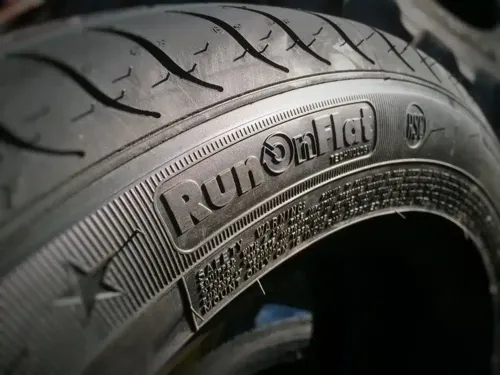How Seasonal Changes Impact Tyre Performance
Tips for Year-Round Safety
Posted on

Understanding how different seasons affect tyre performance is essential for safe driving. Temperature changes, wet conditions, snow, and even dry, hot roads can all impact how well your tyres grip the road, how quickly they wear, and how efficiently your vehicle handles. This guide explores the effects of seasonal changes on tyres and offers practical tips for keeping them in optimal condition throughout the year.
How Temperature Affects Tyres
Cold Weather Effects
As temperatures drop, the air inside tyres contracts, lowering the tyre pressure. Low pressure reduces traction and increases rolling resistance, leading to faster tyre wear and reduced fuel efficiency. Additionally, rubber compounds in tyres can stiffen in colder conditions, especially in summer or all-season tyres, reducing their grip on the road.
Hot Weather Effects
In warmer weather, tyres expand due to heat, increasing pressure. Overinflated tyres are prone to blowouts, especially during long journeys on hot roads. Heat also causes rubber to wear down faster, making tyre maintenance more crucial in summer.
Tip: Regularly check and adjust tyre pressure according to seasonal changes. In winter, inflate tyres as needed, and in summer, watch for over-inflation.
Seasonal Tyres: Winter vs. Summer Tyres
Different tyres are designed for optimal performance in specific temperature ranges. Investing in seasonal tyres can greatly improve safety and vehicle handling.
Winter Tyres
Winter tyres use a softer rubber compound and unique tread patterns to provide better traction in cold, icy, or snowy conditions. They stay flexible in temperatures below 7°C, which enhances grip on slippery surfaces.
Summer Tyres
Summer tyres are designed for warmer conditions and provide better handling and braking on dry and wet roads. However, they become less effective and can even crack in freezing temperatures, making them unsuitable for winter use.
Tip: If you live in an area with harsh winters, consider switching between winter and summer tyres. Alternatively, all-season tyres can be an option, although they may not perform as well as seasonal tyres in extreme conditions.
Wet Conditions and Tyre Safety

Rainy conditions, common in spring and autumn, increase the risk of hydroplaning, where tyres lose contact with the road due to a layer of water. Proper tread depth and patterns are essential for channelling water away, improving grip on wet roads.
Tip: Check tread depth regularly, especially before rainy seasons. Tread depths below 3mm may not provide enough grip on wet roads. Consider replacing tyres if necessary.
The Importance of Tyre Rotation and Alignment
Each tyre wears differently based on the vehicle's weight distribution, driving habits, and road conditions. Regular tyre rotation evens out wear, extending the life of your tyres. Seasonal changes can impact alignment due to road conditions, such as potholes in winter or hot, cracked roads in summer, which throw your wheels out of alignment.
Tip: Rotate tyres every 5,000–7,500 miles, or at least once per season. Check alignment if you notice uneven wear, drifting, or vibrations in the steering wheel.
Preparing Tyres for Each Season
Spring
Spring can bring a mix of rain and warmer temperatures. Check tyre pressure as temperatures rise, and inspect tread depth to ensure adequate water dispersion in wet conditions.
Summer
For summer, inspect tyres for cracks or bulges that may have developed over winter. Higher temperatures increase tyre pressure, so adjust accordingly.
Autumn
As temperatures start to drop, the roads can become slick with rain and fallen leaves. This is an excellent time to switch to winter tyres if necessary. Be vigilant about tread depth as worn tyres struggle to maintain grip in wet, cool conditions.
Winter
Winter demands more from your tyres. Cold temperatures, ice, and snow create challenging conditions. Winter tyres with deep tread and softer rubber are ideal. Regularly check tyre pressure as it decreases in cold weather.
Tips for All-Season Tyre Maintenance
If you opt for all-season tyres, they provide a middle ground between summer and winter tyres, but they require careful maintenance to perform optimally. Here are some maintenance tips:
- Check Tread Depth Regularly: All-season tyres wear out over time, which reduces their effectiveness in rain and snow.
- Maintain Proper Inflation: As with any tyre, keeping all-season tyres properly inflated ensures better grip, fuel efficiency, and longevity.
- Monitor Tyre Condition: Look for signs of cracking or bulging, especially after a season change. Harsh winter conditions can lead to damage that may go unnoticed until summer.
- Schedule Regular Inspections: Having your tyres inspected by a professional each season can help catch minor issues before they become big problems.
Seasonal Storage Tips for Tyres
If you switch between summer and winter tyres, proper storage is essential to maintain their condition. Here’s how to store them:
- Clean and Dry: Before storing, clean tyres to remove dirt, salt, and debris. Make sure they’re completely dry to prevent corrosion.
- Store in a Cool, Dry Place: Tyres should be stored away from direct sunlight and in a cool, dry environment.
- Stacking: Avoid stacking tyres vertically if they’re mounted on rims, as this can distort the shape. If unmounted, stacking is acceptable.
When to Replace Your Tyres
Seasonal changes may also reveal when it’s time for new tyres. If you notice any of the following, consider replacing them:
- Low Tread Depth: If tread depth is below 3mm, tyres may struggle to grip in wet or snowy conditions.
- Visible Damage: Cracks, bulges, or punctures that can’t be repaired are signs that tyres need replacement.
- Uneven Wear: If tyres wear unevenly, it can be a sign of alignment or suspension issues. Replace them if they’re excessively worn on one side.
Tip: Keep a close eye on tyre health, especially as seasons change. Tyres are your main contact point with the road, and maintaining them ensures your safety.
Conclusion
Being proactive about tyre care is key to safe driving in any season. By understanding how seasonal changes affect your tyres, you can make better decisions about maintenance, replacements, and seasonal tyre usage. Remember to regularly check tyre pressure, tread depth, and alignment to keep your tyres performing at their best, no matter the season. For added peace of mind, consider investing in seasonal tyres suited to your climate, and don’t forget to rotate and inspect them regularly for optimal safety and longevity.









